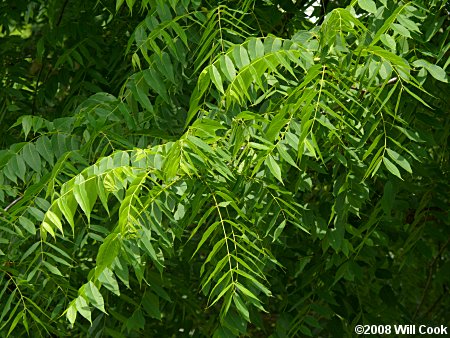
| Black Walnut is a fairly common large tree of bottomland forests, familiar for its edible nuts and valuable wood. The long, pinnately compound leaves are distinctively fragrant. The most similar trees are Butternut (Juglans cinerea) and Pecan (Carya illinoinensis). Orange Co., NC 6/1/08.
|
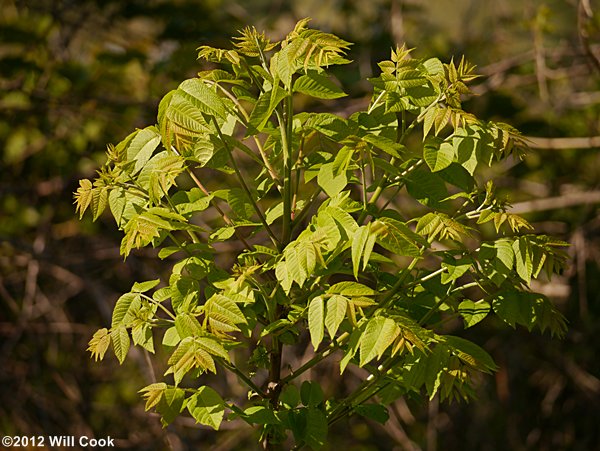
| Newly emerging leaves are a bit shorter, of course. Madison Co., NC 4/9/2012.
| 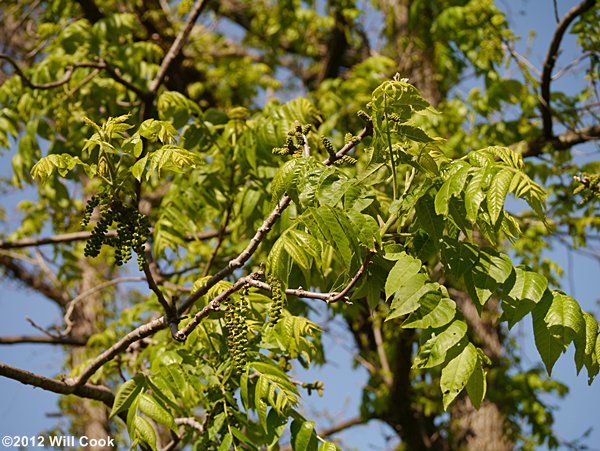
| Flowers appear as the leaves are expanding, in mid-spring. Madison Co., NC 4/9/2012.
| 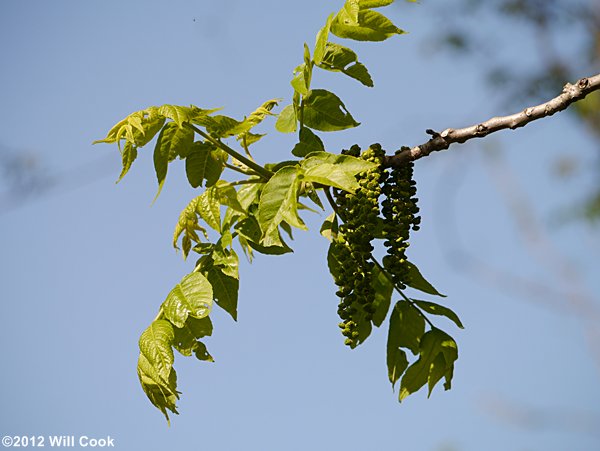
| Madison Co., NC 4/9/2012.
|
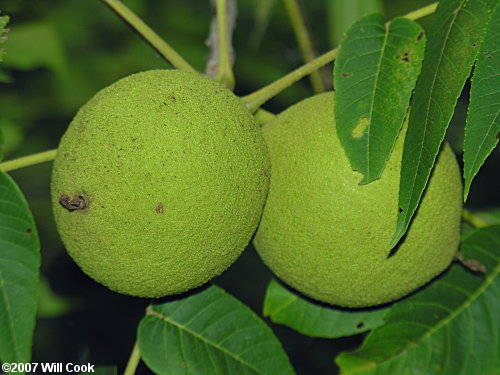
| The fragrant fruits are large and ball-shaped. Orange Co., NC 7/20/07.
| 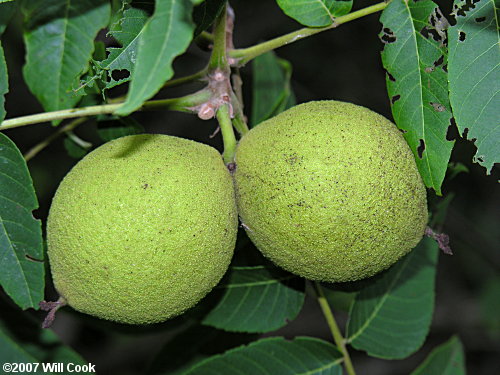
| These green-husked fruits turn yellow when fully ripe, then black, and can be used to stain fabric. Orange Co., NC 7/20/07.
|
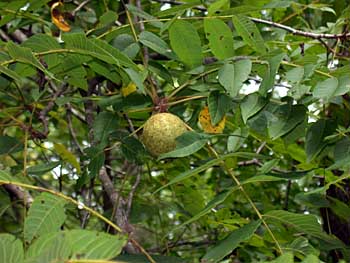
| Orange Co., NC 9/20/02.
| 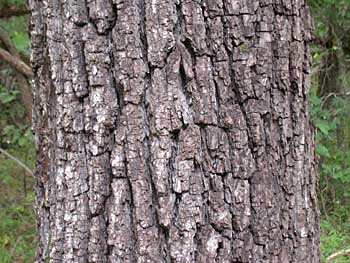
| The bark of large, old trees is very dark and rough. Orange Co., NC 9/20/02.
|
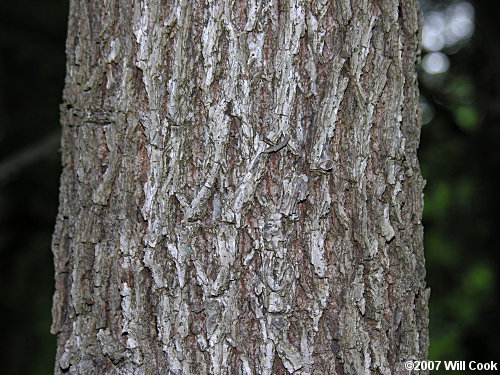
| Bark of a younger tree. Orange Co., NC 7/20/07.
| 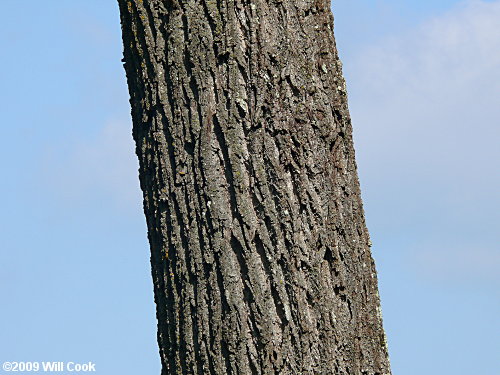
| Grayson Co., VA 5/30/2009.
|
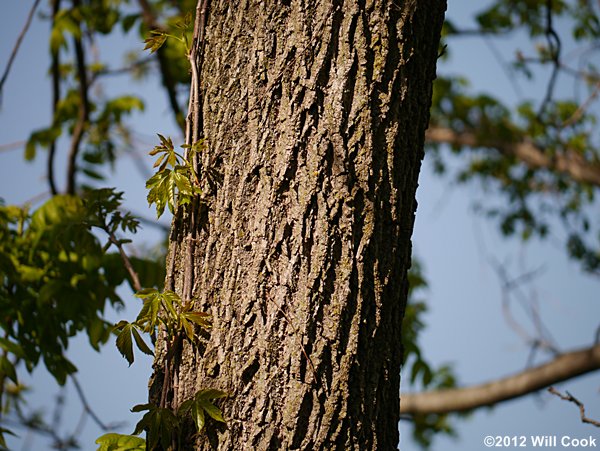
| Madison Co., NC 4/9/2012.
| 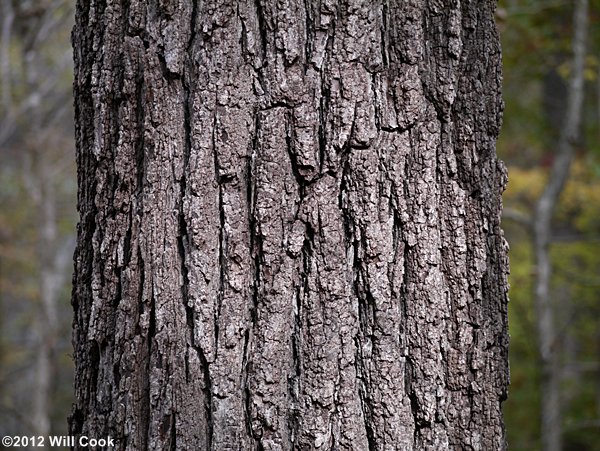
| A large tree with blackish bark. Orange Co., NC 11/4/2012.
|
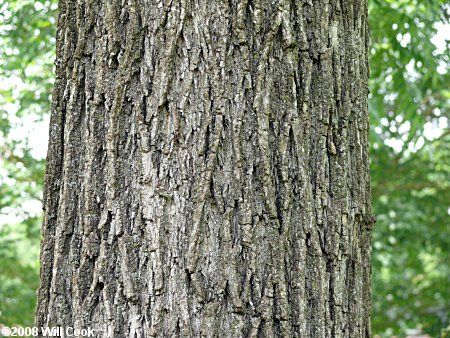
| The bark of medium-sized trees is gray with diamond-shaped ridges. Orange Co., NC 6/1/08.
| 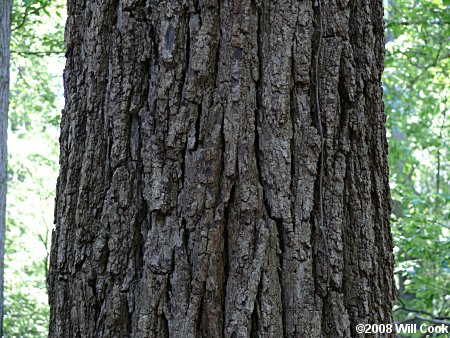
| Orange Co., NC 5/3/08.
|
More information:
Hilton Pond Center
US Forest Service Silvics Manual
Virginia Tech Dendrology
Recommended Tree, Shrub, and Woody Vine Identification Guides
|
|













